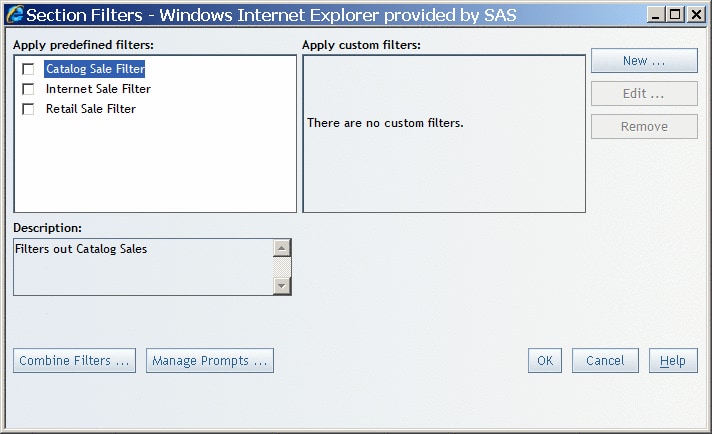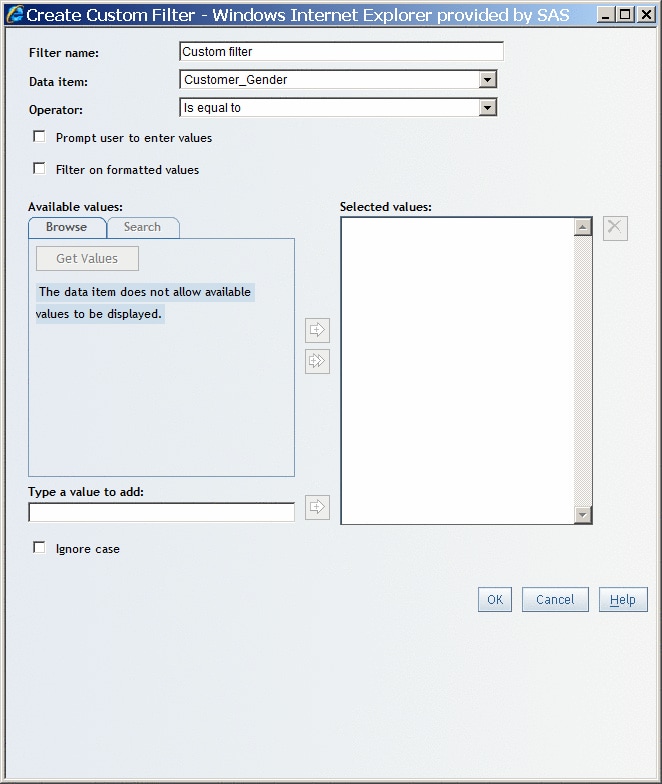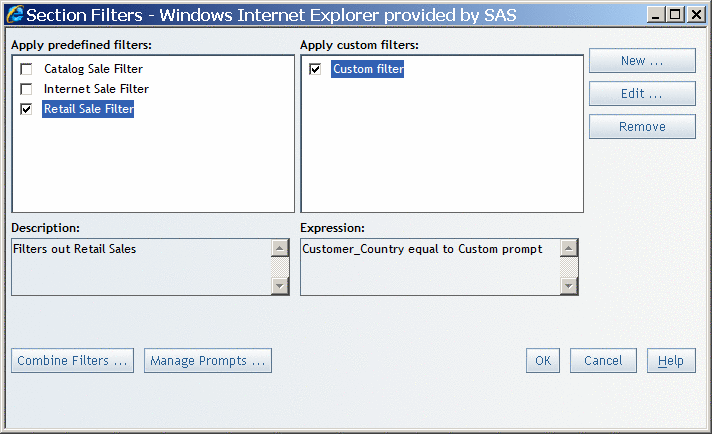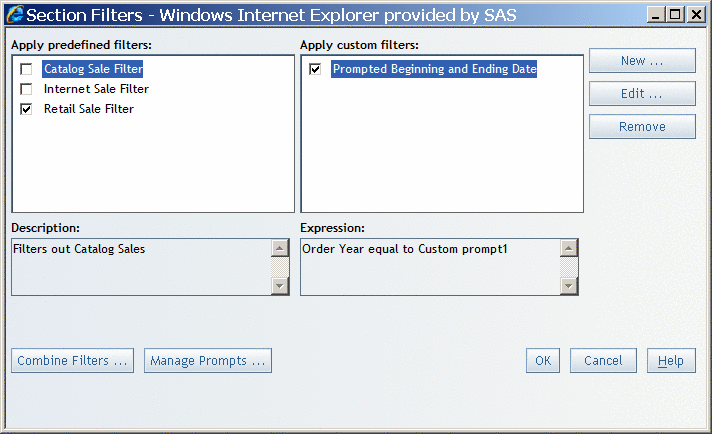Creating Prompted Section Filters
Create a Prompted Filter for an Alphanumeric Category
To create
a prompted filter for an alphanumeric category in a relational data
source, complete these steps:
-
In the Filter name field, accept the default name or provide a different name. For example, if you are creating a prompted filter that will enable users to select a country, type a name such as
Prompted Country Selection. The filter name appears in the Apply custom filters box in the Section Filters dialog box. -
(Optional) If the selected data item enables you to filter on formatted values, then you can select the Filter on formatted values option. Regardless of your selection, the query results show formatted values.(footnote1)
-
If you selected Contains, Does not contain, Matches pattern, or Does not match pattern, then complete these steps:If you selected Equal to or Not equal to, Between values or Not between values, then your next steps depend on the type of prompt that you selected. The steps are explained in Operators and Prompt Types.Note: The data source administrator determines whether the Dynamically generate values option is available.Operators and Prompt Types
-
You can also select Browse or Search to find available values. For more information, see Browsing or Searching for Filter Values.
-
If you accessed the Create Custom Filter dialog box from the Section Filter dialog box, then you can see that the filter you just created is now displayed and selected in the Apply custom filters box on the Section Filter dialog box. When the filter name is selected, the filter expression is shown in the Expression box.TipCustom filters can be saved for future use. To turn off the filter, clear the check box next to the filter name. For more information, see Apply Existing Section Filters.
-
(Optional) New filters are automatically added to the existing filter combination expression. By default, new filters are joined using the AND operator, which means that the query results must match all selected filters. For more information, see Combine Filters.
Create a Prompted Filter for a Date Category
To create
a prompted filter for a date, time, or timestamp in a relational data
source, complete these steps:
-
In the Filter name field, accept the default name or provide a different name. For example, if you are creating a prompted filter that will enable users to select a date range, type a name such as
Prompted Beginning and Ending Date. The filter name appears in the Apply custom filters box in the Section Filters dialog box. -
When you access the Create Custom Filter dialog box from the Section Filter dialog box, then the filter that you just created is automatically selected in the Apply custom filters box. When the filter name is selected, the filter expression is shown in the Expression box.TipCustom filters can be saved for future use. To turn off the filter, clear the check box next to the filter name. For more information, see Apply Existing Section Filters.
-
(Optional) New filters are automatically added to the existing filter combination expression. By default, new filters are joined using the AND operator, which means that the query results must match all selected filters. For more information, see Combine Filters.
FOOTNOTE 1: Filtering on
formatted values can sometimes adversely affect query performance.
If you have questions about whether you should select this option,
contact your data source administrator .[return]



